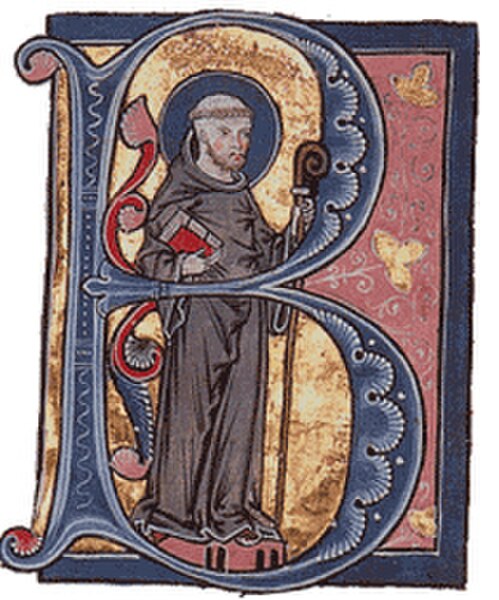Bernard of Clairvaux, O. Cist., venerated as Saint Bernard, was an abbot, mystic, co-founder of the Knights Templar, and a major leader in the reformation of the Benedictine Order through the nascent Cistercian Order.
San Bernardo by Juan Correa de Vivar, held in the Museo del Prado, Madrid, Spain
The Vision of St Bernard, by Fra Bartolommeo, c. 1504 (Uffizi)
Bernard exorcising a possession, altarpiece by Jörg Breu the Elder, c. 1500
Bernard holding a demon at his feet, oil on canvas by Marcello Baschenis, c. 1885
The Cistercians, officially the Order of Cistercians, are a Catholic religious order of monks and nuns that branched off from the Benedictines and follow the Rule of Saint Benedict, as well as the contributions of the highly-influential Bernard of Clairvaux, known as the Latin Rule. They are also known as Bernardines, after Saint Bernard himself, or as White Monks, in reference to the colour of the "cuculla" or cowl worn by the Cistercians over their habits, as opposed to the black cowl worn by Benedictines.
St. Bernard of Clairvaux, one of the most influential early Cistercians, seen here depicted in a historiated initial
An illumination of Stephen Harding (right) presenting a model of his church to the Blessed Virgin Mary (Municipal Library, Dijon). Cîteaux, c. 1125. At this period Cistercian illumination was the most advanced in France, but within 25 years it was abandoned altogether under the influence of Bernard of Clairvaux.
Tintern Abbey, founded in 1131
The ruins of Melrose Abbey, mother house of the Cistercians in Scotland








